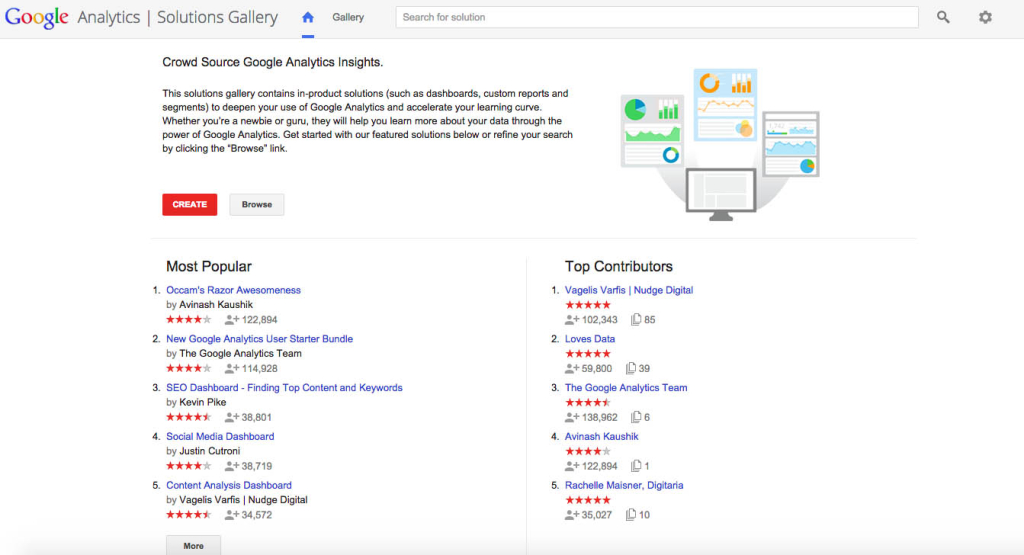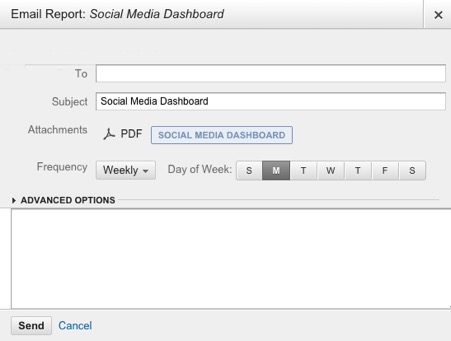In this blog, I will take you through the 3 best analytics tips I’ve been given to track website performance and impress your boss. Make good use of them.
Tip 1: Customised dashboards
It can be easy to get overwhelmed with data from Google Analytics but your colleagues are still expecting you to create amazing reports, to share analysis with them and to spot opportunities or issues. Relatively unknown but very useful, Google Analytics offers customised dashboard to help you monitor your performance.
You can easily use customised dashboards for social media, for SEO, traffic acquisition, branding and content marketing… You just need to have a look and choose what you need.
They are free and accessible in just a click. Since every business is different, the monitoring objectives are, so you will need to make some changes or get inspired to develop your ideal table edge.
1. Select the customised dashboard you want (you can also use the search bar to look for relevant terms)
2. Click Import
3. Select the website you want to monitor (in select a view)
4. Click create
Tip 2: Customised alerts
It can also be frustrating not to be instantly aware of what happens in real-time on your website. You cannot afford to spend every minute of your day on Google Analytics trying to to spot unusual behaviours. The ability to spot in real time a particularly successful campaign or an issue could be invaluable
After identifying the key performance indicators, you can associate a tolerance level to be told when there is an unusual behaviour on your website. Whenever the tolerance level is reached, Google Analytics will notify you and you can take the required actions to change the situation.
1. Click on Admin
2. Under View, click on “Custom alerts”
3. Click New alert
4. Create your alert and click save
Get some inspiration with the 5 examples of customised alerts by Google
Tip 3: Send reports automatically
After building multiple dashboards that will respond to your needs, you can easily share these reports with your colleagues.
Google Analytics provides automated emails for your reports so that you can you all have a shared vision of your website performance.
1. On each dashboard, click on email
2. Complete the pop-up with
- The recipient
- The frequency
- The format
(if the structure of the dashboard were to be changed, the next report will automatically adjust to the new structure)










